Permeability
Type of resources
Available actions
Topics
Keywords
Contact for the resource
Provided by
Years
Formats
Representation types
Update frequencies
Scale
-
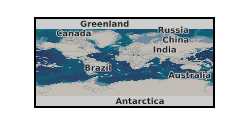
Data for NERC grant NE/L000660/1. This is the data supporting Fig. 4 of the publication: Ebigbo, A., Lang, P. S., Paluszny, A., and Zimmerman, R. W. (2016). Inclusion-based effective medium models for the permeability of a 3D fractured rock mass. Transport In Porous Media, DOI: 10.1007/s11242-016-0685-z. It contains numerically computed permeabilities for various realisations of fracture networks. There are six different cases (as explained in the paper).
-
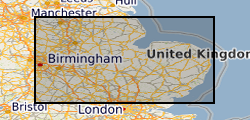
The data comprises GIS layers representing the permeability of artificial deposits for Great Britain. The permeability data has been derived from DiGMap-GB (Digital Geological Map Data of Great Britain), and therefore reflects the scale of DiGMap-GB. For the majority of the Great Britain, the scale is 1:50,000. The data is updated annually, or after a major new release of DiGMap-GB. The permeability data describes the fresh water flow through these deposits and the ability of a lithostratigraphical unit to transmit water. Maximum and minimum permeability indices are given for each geological unit to indicate the range in permeability likely to be encountered and the predominant flow mechanism (fracture or intergranular). Neither of the assigned values takes into account the thickness of either the unsaturated or saturated part of the lithostratigraphical unit. The data can be used freely internally, but is licensed for commercial use. It is best displayed using a desktop GIS, and is available in vector format as ESRI shapefiles and MapInfo TAB files.
-

These data, presented in an excel spreadsheet, where each tab is a different sample (corresponding to the names in the publication), shows the fluid flow volume through time during a permeability measurement, plus the calculation of permeability. These permeability data were used in the publication by Weaver et al. 2023 (https://doi.org/10.1016/j.epsl.2023.118410) The data was collected and analysed at the University of Liverpool and each sample is made of volcanic glass fragments from Hrafntinnuhryggur, Iceland. The geographical location of the samples is here inconsequential for the dataset, the specific obsidian was chosen for its physical properties alone. The experiments were conducted and the data collected and analysed in 2021 and 2022 for publication in 2023. Experiments consisted of placing loose volcanic glass fragments in a crucible and placing the assembly in a high temperature oven (1006 oC) for variable amount of time to sinter them into a coherent material, before cooling and measuring permeability. The permeability measurement was made using the constant head permeability method with synthetic oil as a permeating fluid. This involves the filling of a given height of oil above the sample, creating an overburden that drives fluid flow. Details of the method are provided in detail in Weaver et al., 2023. The data were collected to assess the permeability evolution of fragmental systems undergoing diffusive outgassing, vesiculation and sintering to try to understand the longevity and impact of fragment-filled cracks present in volcanic environments.
-
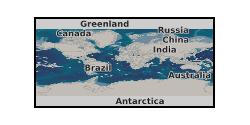
Data recorded during triaxial rock deformation experiments of Westerly granite in the presence of pressurised pore fluids (water). Data consists of mechanical data (load, displacement, confining pressure) and pore pressure data (up- and downstream pore pressure, upstream intensifier volume, four pore pressure transducers mounted on sample). Contains all data necessary to evaluate the results presented in the paper entitled: 'Dilatancy stabilises shear failure in rock' by Aben and Brantut, submitted to Earth and Planetary Science letters, and available at arXiv (arXiv:2101.10036).
-

Data used for the peer-reviewed manuscript entitled 'Variation of hydraulic properties due to dynamic fracture damage: Implications for fault zones' by Aben, FM, Doan, M-L, and Mitchell, TM. Manuscript currently in revision for Journal of Geophysical Research. Data consists of: Text files with the mechanical data timeseries (confining pressure, and pore volume and pore fluid pressure for two pore fluid pressure intensifiers) obtained during permeability measurements of deformed rock samples. File name contains sample number. Additional two mechanical data files (calib15 and calib18) are calibration files for the pore volume measurements. Manually traced X-ray CT images obtained on six samples.
-
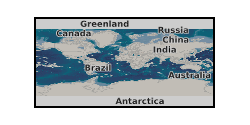
This dataset gathers the data collected during a brine:CO2 flow-through experiments conducted on three sandstones with similar mineralogical compositions (major minerals) but different porosity, clay-size fraction and clay mineralogy. The aim was to study the effect of such heterogeneities on interpretation of geophysical data. Geophysical and transport data were collected before, during and after exposing each sample to CO2, and analysed with basic petrophysical properties. The tests were conducted in the high-pressure, room-temperature (20°C) experimental setup for multi-flow-through tests in the Rock Physics Laboratory at the National Oceanography Centre, Southampton (NOCS), during 2022, as part of the OASIS, EHMPRES and FOCUS projects with funding from the Research Council of Norway (RCN grant no. 280472 - OASIS) and the Natural Environment Research Council (NERC grants NE/X003248/1 - FAPESP-EHMPRES, and NE/X006271/1 - FOCUS). To simulate the specific effective stress conditions of the target CO2 storage reservoir in Aurora (Aker et al., 2021), northern North Sea, the confining and pore pressure conditions of the reservoir were accommodated to our lab temperature conditions. We measured ultrasonic P- and S-wave velocities and attenuations, axial strains and electrical resistivity for an increasing CO2 saturation. The degree of brine saturation was inferred from the electrical resistivity using the modified Archie’s empirical relationship to account for the contribution of clay minerals, based on the Waxman–Smits–Juhasz model (see further details in, e.g., Falcon-Suarez et al. (2021)). We refer to Falcon-Suarez et al. (2020) for further information about the experimental rig and the CO2 injection protocol.
-

Data recorded during hydrostatic pressurisation and triaxial rock deformation experiments of Westerly granite and Darley Dale sandstone. Data consists of mechanical data (load, displacement, confining pressure) and pore pressure data (up- and downstream pore pressure, upstream intensifier volume, four pore pressure transducers mounted on sample). Contains all data necessary to evaluate the results presented in the paper entitled: 'Fluid pressure heterogeneity during fluid flow in rocks: New laboratory measurement device and method' by Brantut and Aben, submitted to Geophysical Journal International, and available at arXiv (arXiv:2006.16699).
-

Data supporting 'Effective permeability tensors of three-dimensional numerically grown geomechanical discrete fracture networks with evolving geometry and mechanical apertures', submitted to the Journal of Geophysical Research: Solid Earth. Authors: Robin N Thomas (corresponding, robin.thomas11@imperial.ac.uk), Adriana Paluszny, Robert W Zimmerman. Department of Earth Science and Engineering, Imperial College London. Contents: For each GDFN, the geometry at each growth step. Additionally, for GDFN E, the data shown in the paper (aperture and flow distributions, figures 6 and 7) are provided, including the displacement for the mechanical case, and pressure distributions which were not shown in the manuscript. For the two SDFN sets, the geometry of the four datasets shown in figures 4 and 5 are provided. Notes: - The geometry files are provided in the .3dm format, Rhinocerous' native format (https://www.rhino3d.com/). A free trial of Rhinocerous can be used to explore the files, and can convert them to a range of other CAD file types. - VTK files can be viewed using free software such as Paraview (https://www.paraview.org/). These contain the meshes. - Fracture surface areas reported in the paper are derived from the mesh, rather than the geometry. The mesh approximates the geometry leading to a different surface area than those measured in the geometry (3dm) files. - The SDFN datasets are shown before trimming the parts of fractures which are outside the domain. These parts are trimmed when they are imported to ICGT.
-
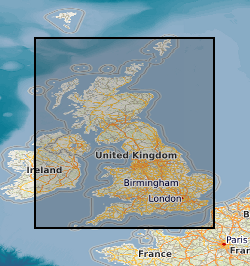
The data comprises GIS layers representing the permeability of mass movement deposits for Great Britain. The permeability data has been derived from DiGMap-GB (Digital Geological Map Data of Great Britain), and therefore reflects the scale of DiGMap-GB. For the majority of the Great Britain, the scale is 1:50,000,. The data is updated annually, or after a major new release of DiGMap-GB. The permeability data describes the fresh water flow through mass movement deposits and the ability of a unit to transmit water. Maximum and minimum permeability indices are given for each geological unit to indicate the range in permeability likely to be encountered and the predominant flow mechanism (fracture or intergranular). Neither of the assigned values takes into account the thickness of either the unsaturated or saturated part of the lithostratigraphical unit. The data can be used freely internally, but is licensed for commercial use. It is best displayed using a desktop GIS, and is available in vector format as ESRI shapefiles and MapInfo TAB files.
-
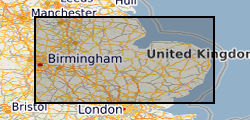
The data comprises four GIS layers representing the permeability of geological deposits for Great Britain (bedrock, superficial, artificial and mass movement deposits). The permeability data has been derived from DiGMap-GB (Digital Geological Map Data of Great Britain), and therefore reflects the scale of DiGMap-GB. For the majority of the Great Britain, the scale is 1:50,000, however in areas where the geology is not mapped to this scale, the next best available scale is used. For bedrock deposits this is 1:250,000 and for superficial deposits this is 1:625:000. Artificial ground and mass movement deposits have not been mapped beyond 1:50,000. The data is updated annually, or after a major new release of DiGMap-GB. The permeability data describes the fresh water flow through geological deposits and the ability of a lithostratigraphical unit to transmit water. Maximum and minimum permeability indices are given for each geological unit to indicate the range in permeability likely to be encountered and the predominant flow mechanism (fracture or intergranular). Neither of the assigned values takes into account the thickness of either the unsaturated or saturated part of the lithostratigraphical unit. The data can be used freely internally, but is licensed for commercial use. It is best displayed using a desktop GIS, and is available in vector format as ESRI shapefiles and MapInfo TAB files.
 NERC Data Catalogue Service
NERC Data Catalogue Service